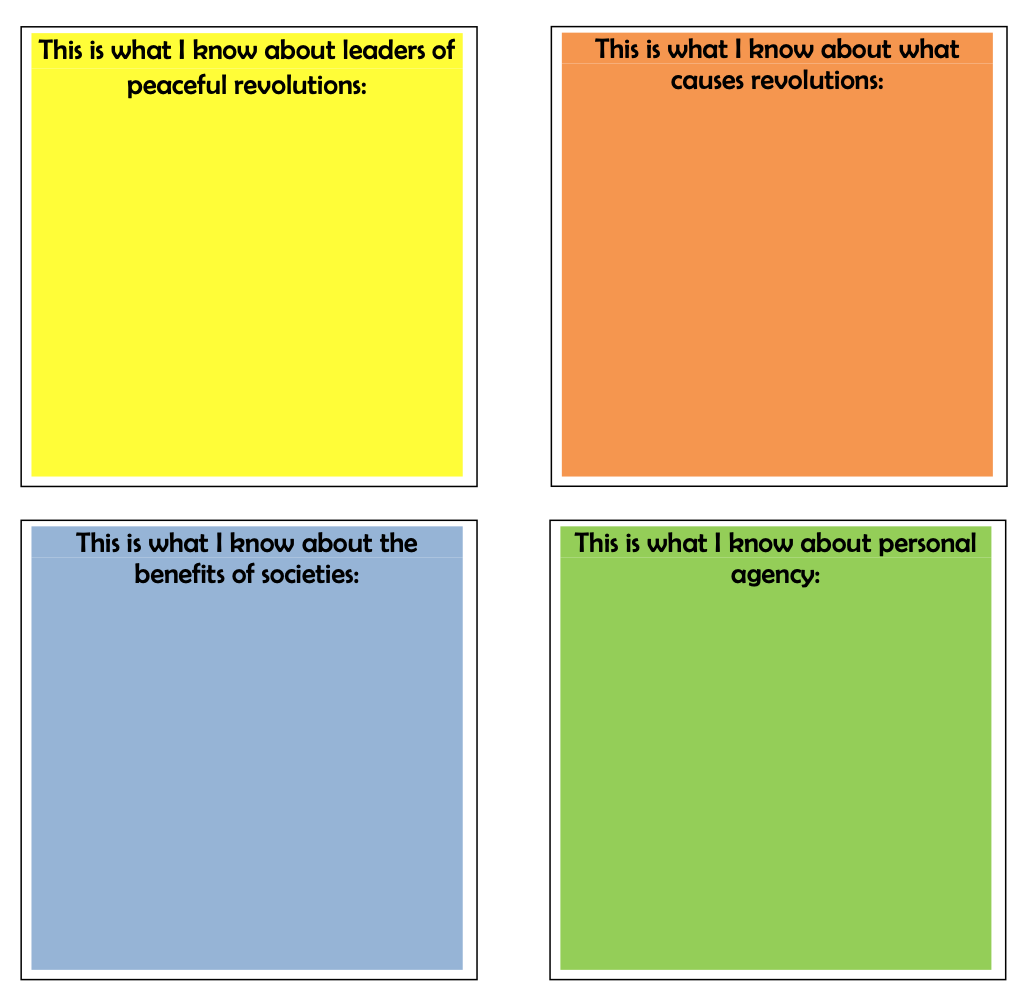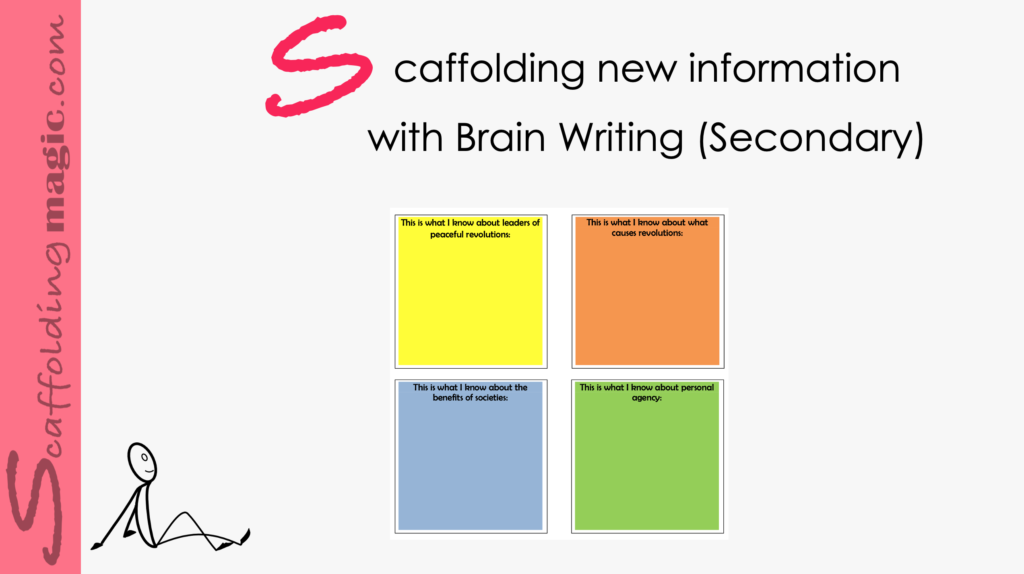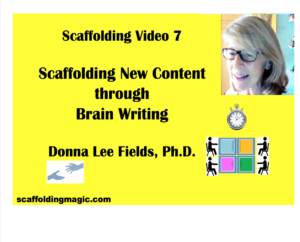You caught a beauty!!!
Download PDF of scaffold here.
theory behind scaffolding activity…
When asked about scaffolding most teachers will proudly point to brainstorming or mind mapping as their ‘go-to’ activity. Why? Probably because in most CLIL workshops, this is the scaffold that is most highlighted as the way of assessing students’ past knowledge of any given subject. Why? Probably because it is the technique that is most often referred to in the book that brought the CLIL approach to worldwide fame in 2008 Uncovering CLIL. However, the authors themselves of this monumental publication now recognise that this dynamic is less than propitious; that is to say that brainstorming and mindmapping have more disadvantages than advantages. Why. Well just to name a few:
- they assess students in a public manner;
- those students who always participate will participate, and those that are too timid to participate, will remain silent as usual;
- they are ordinarily teacher-led (thus promoting a teacher-centred educational environment);
- only one student participates at a time;
- studies show that the dynamic brings up the students’ fears of evaluation, of being judged, of appearing foolish in front of their classmates:
- students are reluctant to participate for fear of making linguistic mistakes and/or for sharing ideas that are esoteric and might not be accepted by their peers.
Now this scaffold doesn’t seem as attractive as it seemed three minutes ago, right?
There is a solution: brainwriting. Lesser known than brainstorming or mindmapping, brain writing gives students the opportunity to share ideas in a safer setting and often yields more ideas in less time than traditional group brainstorming.
Brainwriting is very simple to prepare (see below for examples). Some of its advantages:
- it relieves students of the anxiety of the public classroom forum – such as in brainstorming;
- it raises the quality and quantity of the students’ output as they learn from each other;
- it synthesizes and summarises key points in the topic;
- the different learning styles included (verbal, linguistic, auditive, written, manipulative), increase synaptic connections and so encourage long-term memory.*
As an example of this activity, we are using questions that will help students transition into a trigonometry lesson.
step by step…

- Establish the topic from the lesson, unit, project you are about to begin.
- Divide this topic into 3-6 categories and cut up paper into fourths
- On these fourths, write statements on the top of each (you can use this template). Make enough sets for all the groups in your class and give each group a set.
- Each group member takes one of the pieces of paper and when you give a signal, each one of them has 60 seconds to write whatever they know about that statement on theat piece of paper.
- After 60 seconds, you signal them to pass their piece of paper to their classmate on the left. They then have 60 seconds more to add beneath what has already been written by their classmate, whatever they know about the new statement they’ve been given.
- Continue this dynamic until each student has written about each statement once.
- Give groups 4-5 minutes to synthesise the information from each statement into 1-2 sentences.
- In turns, each group presents their synthesised conclusions and their classmates give them respectful and useful comments. (See these four (4) rules of respectful interaction.)
- Students write 100-150 words on the dynamic of the activity. They indicate whether they felt more comfortable working in small groups and writing their past knowledge instead of speaking directly in front of the rest of their classmates.
- Formative Evaluation/Reflection: Students questions from the Question Continuum. two (2) con content and two ( 2) on methodology.
*Doidge, Norman (2007). The Brain that Changes Itself, Penguin Books

video explanation…


Scaffoldingmagic.com is your entryway into DYNAMIC bilingual learning methodologies, such as Phenomenon-Based Learning, CLIL, EMI, and ESL. You’ll find ways to implement critical thinking tools (DOK) to promote higher level thinking, the growth mindset, instill an ethic of excellence, deep reflection on learning, and all through multi-cultural, interdisciplinary activities. We have the keys to turning competences into action and to creating collective efficacy in your school so you move ahead as a unified, enthusiastic team.



